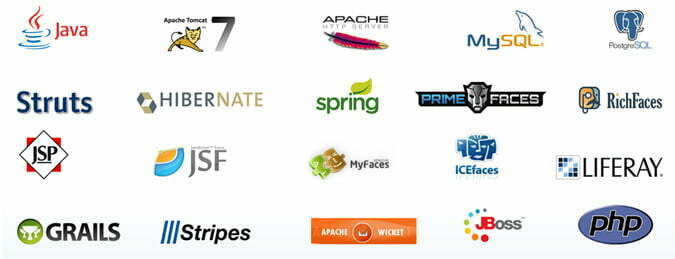What is The Difference Between Java Spring and Java Struts

Spring is the most popular application development and lightweight framework. It can be thought of as a framework of frameworks because it provides support to various frameworks such as Struts, Hibernate, Tapestry, EJB, JSF, etc. The spring framework comprises numerous modules such as AOP, IOC, DAO, Context, WEB MVC, ORM, WEB MVC, etc. It is used to create high performing, easily testable, and reusable code.
A strut is an elegant, extensible framework for creating enterprise-ready Java web applications. It cuts time out of the development process and makes developers more productive by providing them a series of tools and components to build applications with. It comes with an open-source license.
Spring and Struts are both frameworks of Java Languages. Both struts and spring are the two of the most popular and much talked about Java web frameworks today. In this blog, we will discuss the difference between the two.
Spring is an application framework that implements the IOC Design pattern whereas strut is a web framework that implements MVC Design pattern. Spring is a layered architecture but Struts is a not a Layered Architecture. Spring provides an abstraction layer on multiple Java technologies including Servlet, JSPs as well as on other framework software. On the other hand, Struts provides an abstraction layer only on Servlet, JSP technology.
Spring is a lightweight framework that is loosely coupled but strut is a heavyweight framework that is tightly coupled. Spring provides easy integration with ORM, JDBC technologies but in Struts, integrating with ORM, JDBC technology; we need to do manual coding. Spring Framework is said to be a non-invasive which means it doesn’t force a programmer to extend or implement their class from any predefined class or interface given by Spring API. Whereas, Struts are said to be invasive. It forces the programmer that, the programmer class must extend from the base class provided by Struts API.</>
Some of the advantages of using the spring framework are transaction management, support for messaging and support and Integration with Other Frameworks. Whereas some of the advantages of using struts are excellent support for Tag Library, which has wide industry acceptance and its ability to easily integrate with other client-side technologies.
Both of the frameworks are a great choice. If you want to learn about such frameworks, you can join CETPA INFOTECH, which provides core as well as advanced Java Training for 4 weeks- 6 weeks. CETPA is the certified training partner of Oracle and hence provides Java Training in Delhi according to Oracle standards.




3 Comments
Hmm it looks like your blog ate my first comment (it was super long) so I guess I’ll just sum it up what I wrote and say, I’m thoroughly enjoying your blog. I too am an aspiring blog blogger but I’m still new to everything. Do you have any helpful hints for rookie blog writers? I’d really appreciate it.|
Hi there, simply was aware of your weblog via Google, and located that it’s truly informative. I am going to be careful for brussels. I’ll be grateful in the event you proceed this in future. A lot of people will probably be benefited out of your writing. Cheers!
Now I am going to do my breakfast, when having my breakfast coming again to read further news.